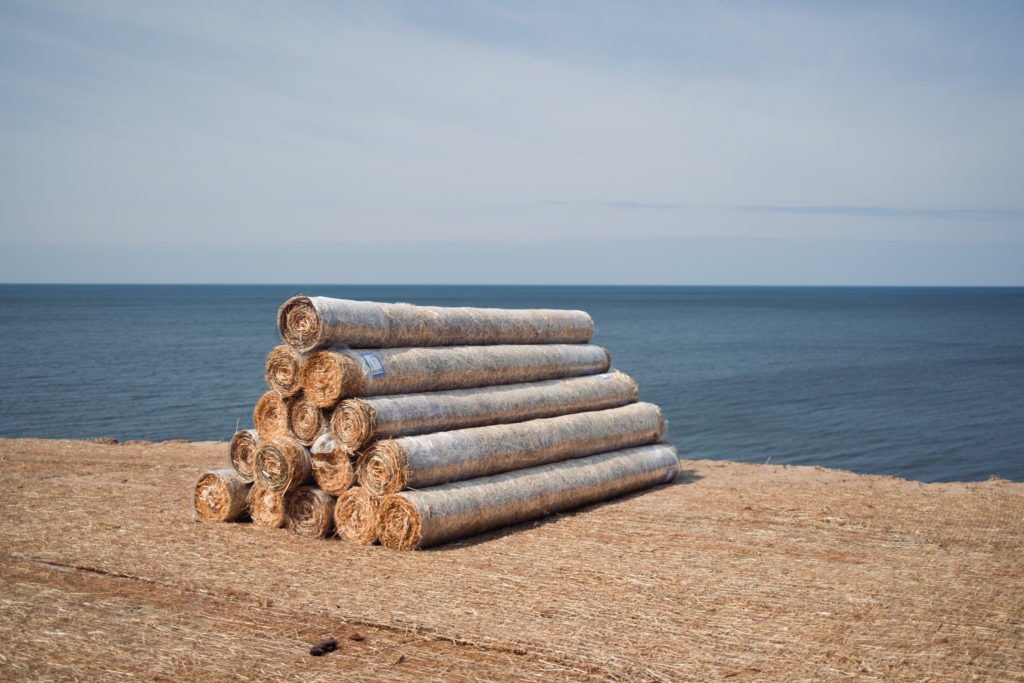Erosion is an ever-growing issue for lakeshore property owners, especially those on steep dunes and bluffs. These homes are susceptible to Lake Michigan’s erosive effects, whether it’s wind, waves, or foot traffic. In these cases, the sand needs a dependable way to be stabilized for the sake of homeowners’ property and the longevity of the lakeshore! Erosion control blankets are that solution – they not only hold dune sand in place but assist in the establishment of new vegetation for continued stabilization.
So how do they work? In this post, we explain:
– What Erosion Control Blankets Are
– Types of Erosion Control Blankets
– How to Install Erosion Control Blankets
– How Erosion Control Blankets Work
– Benefits of Erosion Control Blankets
What is an erosion control blanket?
An erosion control blanket, sometimes called an erosion control mat or straw mat, is a blanket-like structure made up of biodegradable materials that can be installed on any desired location to protect against erosion. These blankets or mats work to hold soil or sand in place, prevent shifting, and provide a stable environment for vegetation establishment.
Erosion control blankets consist of layers of degradable material woven together or bound with netting or mesh. Different alternatives of material and thickness can be used for varying degrees of effectiveness, longevity, and durability.
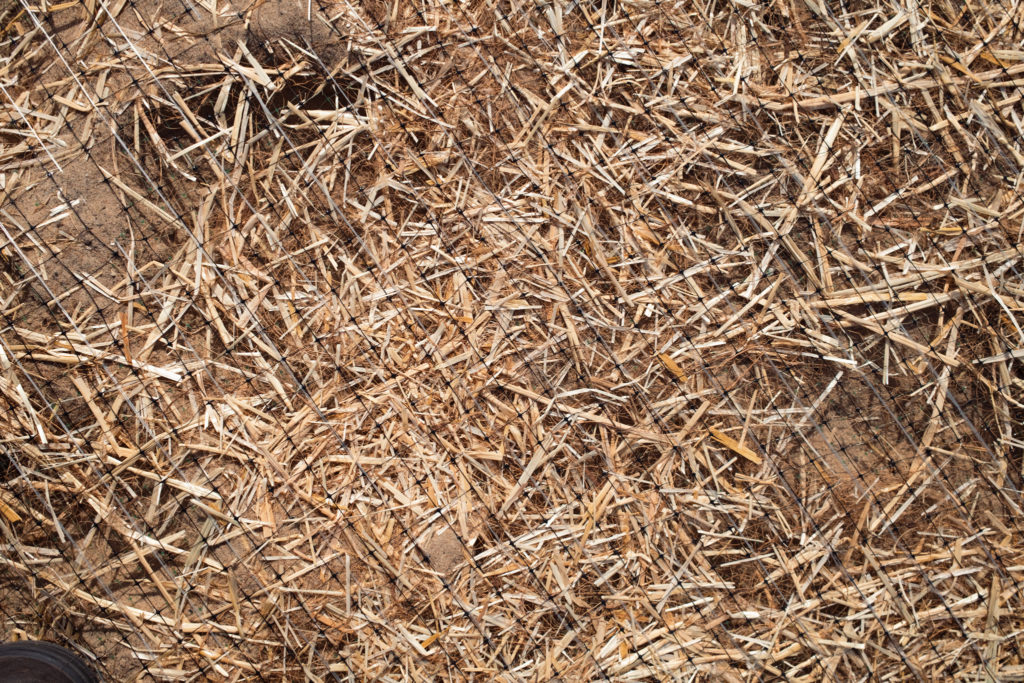
Types of Erosion Control Blankets
There are different types of erosion control blankets, made from varying materials like straw, polypropylene, coconut fiber, or a combination. Since the erosion control blankets used by Lakeshore Customs are made from natural and biodegradable materials, removal is not necessary: they decompose naturally and even then add nutrients to the soil. Each type of blanket has different benefits for its application: for example, straw and coconut fiber erosion control blankets are strong, yet porous for dune grass growth and coconut fiber erosion control blankets are thick to control blowing sand and sediment.
Erosion Control Blankets for Steep Slopes
For steep slopes and dunes like we’re familiar with here on West Michigan shorelines, we use biodegradable erosion control blankets consisting of woven straw and coconut fiber. The products we use are chosen for stability, yet are porous enough to allow dune grass growth through them. These erosion control blankets are also safe for environmentally sensitive areas and shorelines, like the ones local to West Michigan. They provide erosion control solutions that are both environmentally- and wildlife-friendly.
Where the erosion control blankets are used on steep slopes, straw wattles may also be used in conjunction with them to minimize the harmful effects of erosion. Straw wattles are tubular structures that also act as protection to the perimeter of the site. In the case of steep slopes or dunes, straw wattles can be placed at the contours and base of the slope to reduce erosion and runoff and intercept the water that runs down the slope. They work well with erosion control blankets to slow, spread, and filter the water flow down the dune.
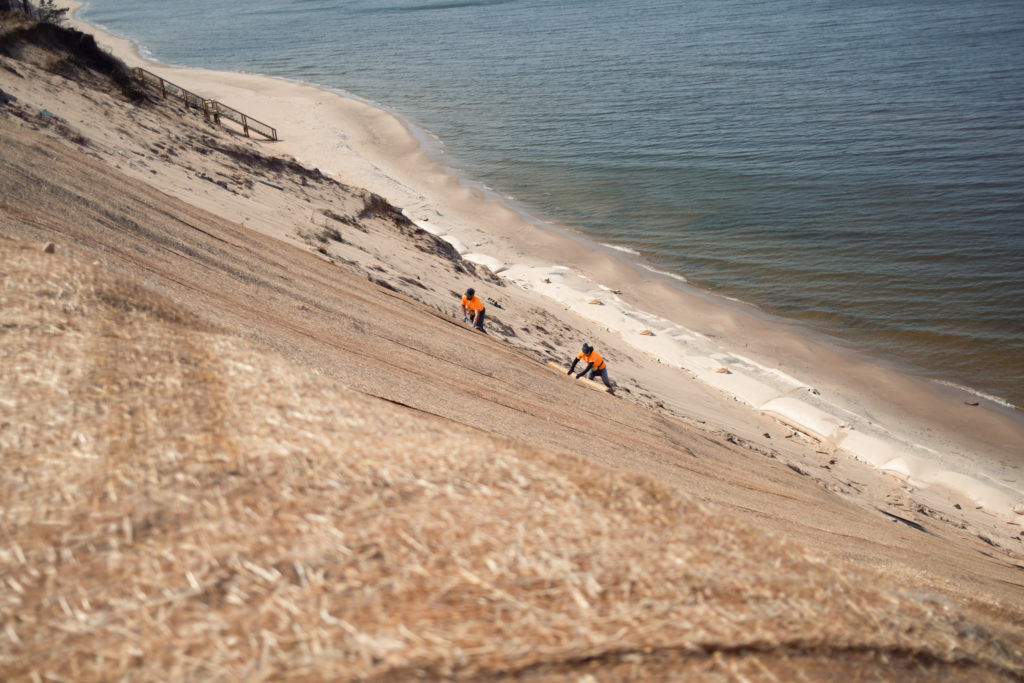
How to Install Erosion Control Blankets
Site Preparation: Installation of erosion control blankets or straw matting begins with site prep. First, the site should be cleared of rocks, roots, branches or other debris. This can be done with a shovel, tiller, or other hand tools usually. The area should be prepared for the mats to be laid directly on the soil or sand, with no other debris in the way.
Digging a Trench: Where erosion control blankets or straw matting is installed on dunes or steep slopes, a small trench is needed at the top of the dune or slope to anchor the matting and prevent it from sliding down the steep area. (For shoreline stabilization and vegetation establishment on your dunes, this step is crucial.) This trench can be dug about 6 inches deep using a shovel, and working in a straight line across the entire area.
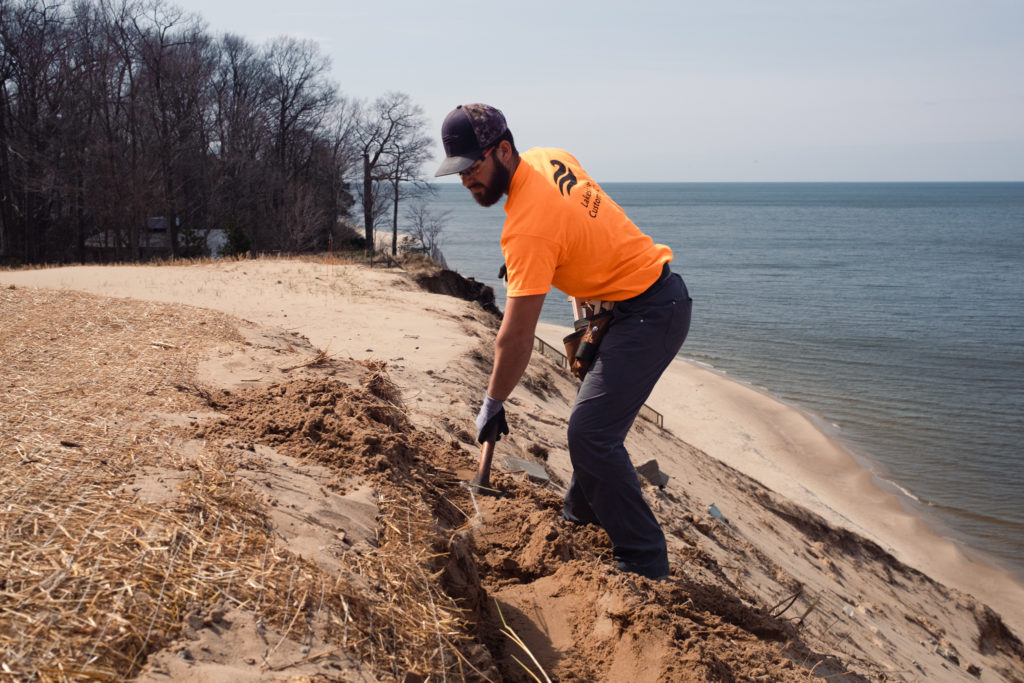
Laying the Blankets/Mats: Next, we lay the erosion control matting in the trenched area, ensuring that it is secure before the matting is unrolled. The blanket is fastened in place according to specs for a firm hold. The trench is refilled with the displaced material for additional stabilization. Then the matting is rolled out from the top of the dune down to the bottom, and staked in place. Vertical edges of the matting are staked in place at the overlap.
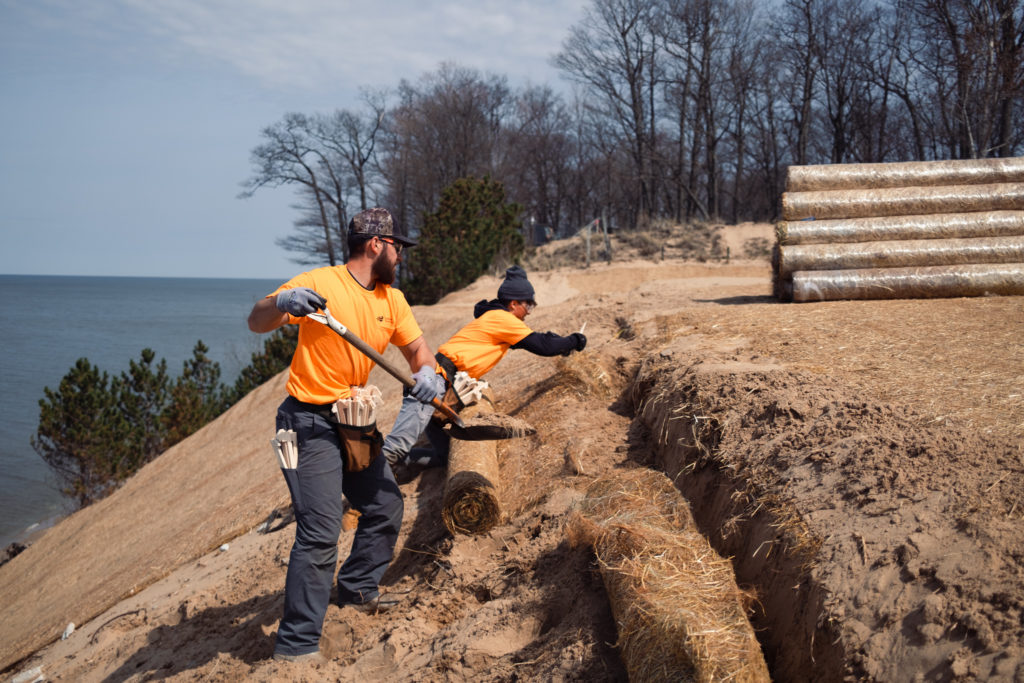
The best time to install erosion control blankets is in the spring. Why? Laying erosion control blankets in spring ensures that vegetation can grow at the optimal time. Installing the blankets in conditions that are too cold risks frost preventing the grass from taking root. On the other hand, installing erosion control blankets in the summer risks drought preventing growth. Since the goal of your erosion control blankets is to establish new vegetation, the time you choose to get them installed is very crucial to their effectiveness.
Learn More About our Erosion Control Blanket Installation Service and Get a Quote
Can you seed over an erosion control blanket?
Yes, you can seed over an erosion control blanket. After the blanket is laid, seed plugs can be installed. Since an erosion blanket is porous, the seeds are held stable by the erosion control blanket while also being able to sprout through. The blanket itself is able to absorb and hold water that is needed for growth, giving the seed perfect conditions to grow.
What An Erosion Control Blanket Does
The job of erosion control blankets is to prevent soil or sand shifting and promote vegetation growth, whether on a flat surface or to stabilize steep dunes. They prevent erosion from worsening by keeping the existing sand or soil in place and creating an environment for new vegetation or foliage to take root. When used in conjunction with grass seed, erosion control blankets work to hold the seed where it is and keep it protected and covered, while still allowing it the water and sunlight that it needs.
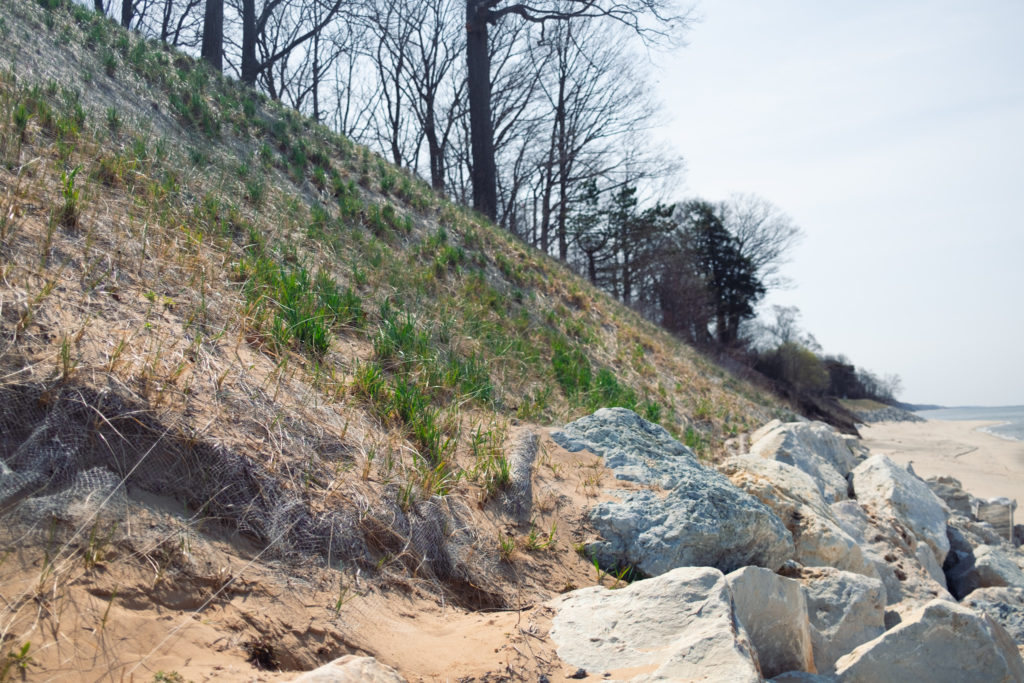
Benefits of Erosion Control Blankets
Erosion control blankets have many advantages and benefits over other methods including:
- Cost-efficiency. Erosion control blankets are a lower cost option than other methods to prevent soil and sand shift.
- Versatility. Erosion control blankets can be used in a variety of industries, from construction to general use on personal property. They can also be installed on a wide variety of terrains, including slopes.
- Naturality. Erosion control blankets decompose naturally over time. You do not need to worry about removing or maintaining them after they are installed.
- Ease of Use and Installation. Erosion control blankets can be both transported and installed easily. They can be applied to many different terrains and laid side by side to cover them completely.
